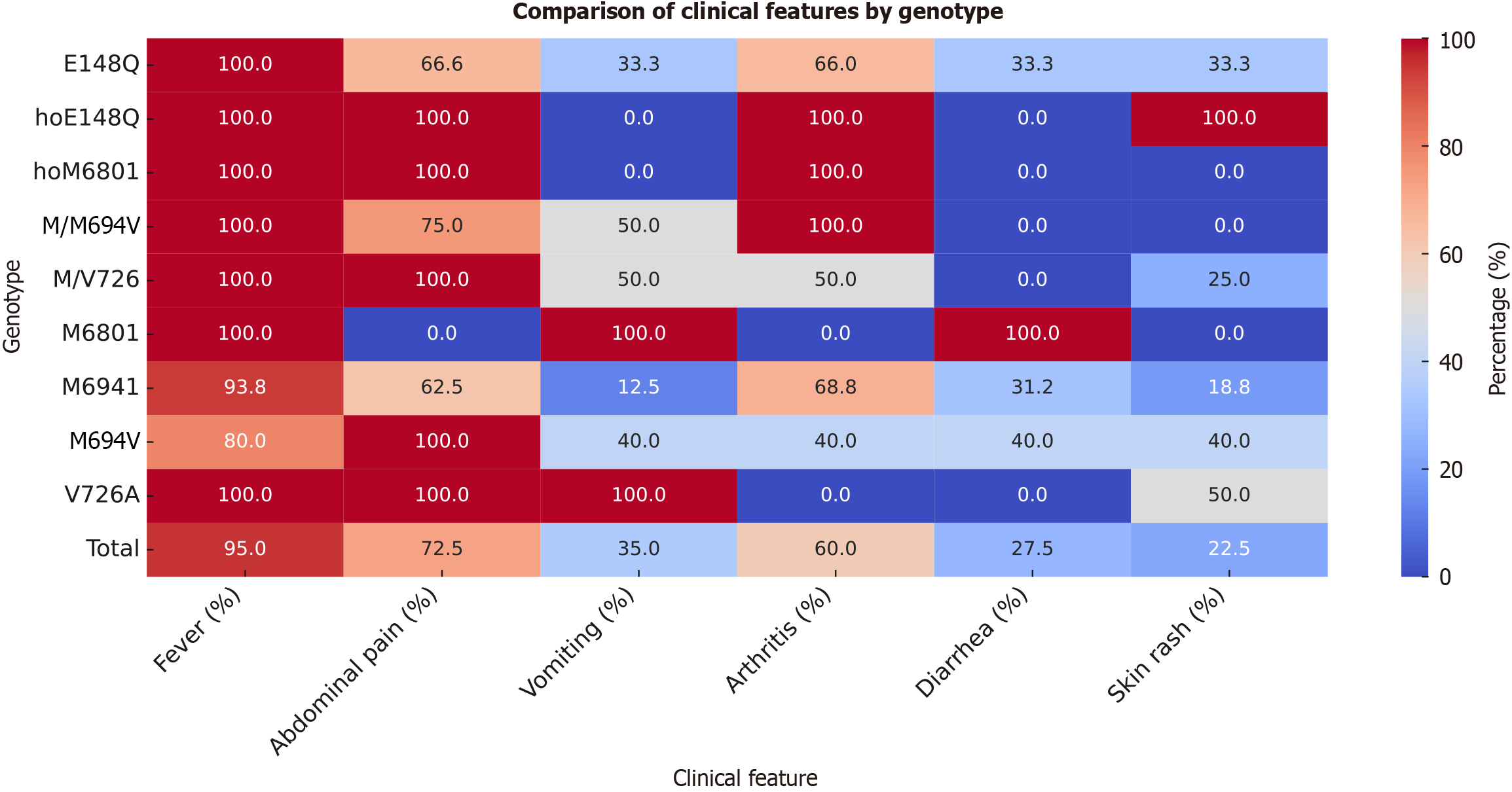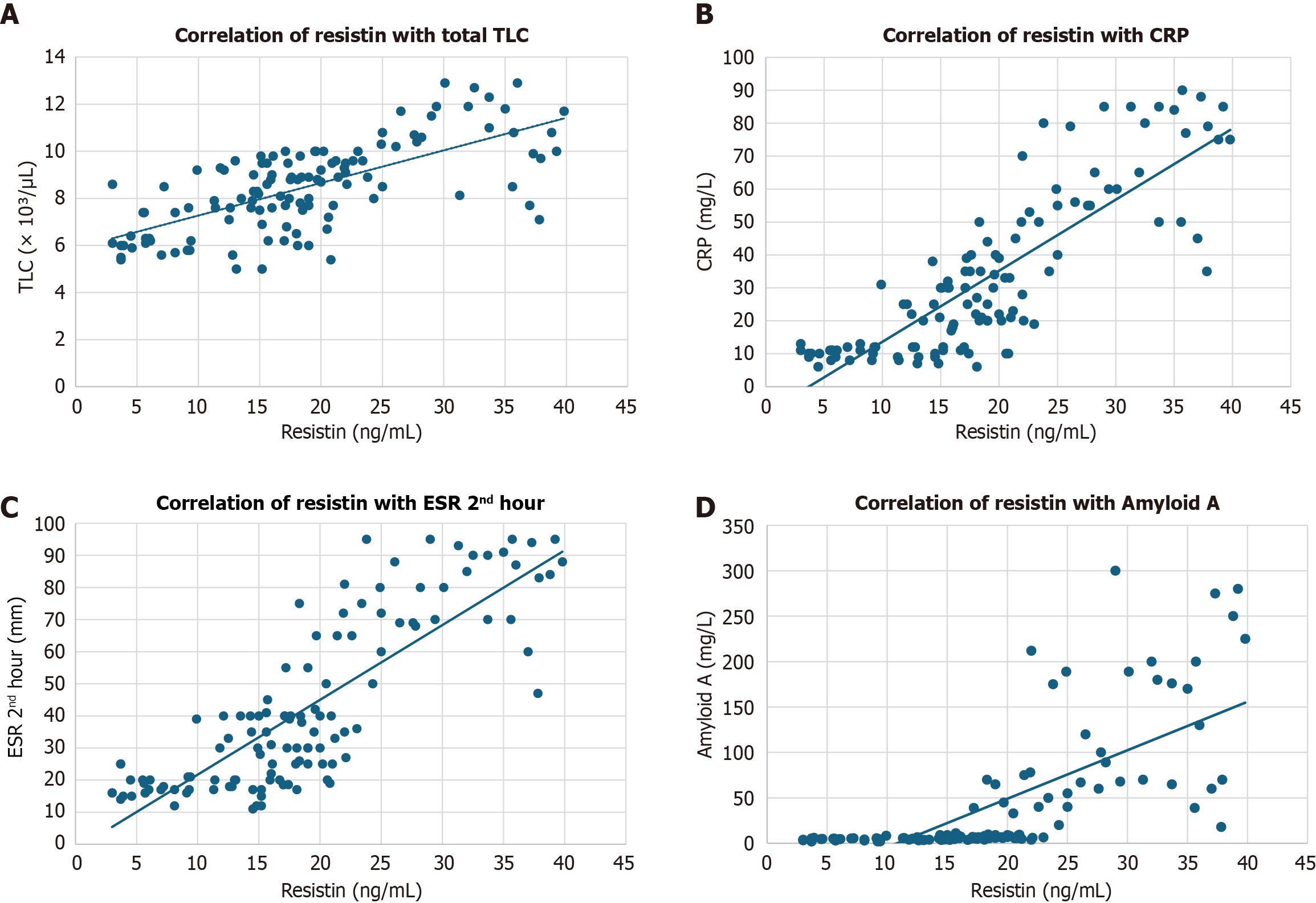Copyright
©The Author(s) 2025.
World J Clin Pediatr. Dec 9, 2025; 14(4): 108068
Published online Dec 9, 2025. doi: 10.5409/wjcp.v14.i4.108068
Published online Dec 9, 2025. doi: 10.5409/wjcp.v14.i4.108068
Figure 1 The prevalence of familial Mediterranean fever symptoms.
FMF: Familial Mediterranean fever.
Figure 2
Distribution of FMF gene mutations.
Figure 3
Comparison of clinical features by genotypes.
Figure 4
Receiver operating characteristic curve of all Familial Mediterranean fever patients (attack and attack-free periods) and the control group.
Figure 5 Correlation of serum resistin with inflammatory markers.
A: Correlation of resistin with total leukocyte count; B: Correlation of resistin with C-reactive protein; C: Correlation of resistin with erythrocyte sedimentation rate (2nd hour); D: Correlation of resistin with serum Amyloid A. TLC: Total leukocyte count; CRP: C-reactive protein; ESR: Erythrocyte sedimentation rate; SAA: Serum Amyloid A.
- Citation: Morad LM, Elsaadany E, Qassem SS, Elnady MS, Abdel-Kareem AA, Al-Beltagi M. Serum resistin levels in pediatric familial Mediterranean fever: Potential biomarker for inflammatory activity. World J Clin Pediatr 2025; 14(4): 108068
- URL: https://www.wjgnet.com/2219-2808/full/v14/i4/108068.htm
- DOI: https://dx.doi.org/10.5409/wjcp.v14.i4.108068

















